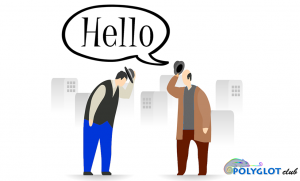Language/Wolof/Vocabulary/How-to-Say-Hello-and-Greetings
Hi Wolof learners! 😃
Do you want to learn how to say “Hello” in Wolof?
Greetings are an important part of any language because they allow you to connect and communicate with others.
If you’re planning a trip to the country or are trying to learn Wolof, keep reading to discover some of the most important greetings.
Let’s get started! 🤗
Greetings
| English | Wolof |
|---|---|
| general greeting | Jama ngaam |
| general greeting spoken by Muslims | Salamalekum |
| reply to Salamalekum | Malakeumsalam |
| general greeting | Nanga def |
| reply to Nanga def | Mangi fii rek |
| reply to Mangi fii rek | Nunga fe |
| reply to Nunga fe | Mbaa sa yaram jaam |
| reply to Mbaa sa yaram jaam | Jamm rekk |
| reply to Jamm rekk | Alhumdullilah |
| morning greeting spoken to one person | Jama nga fanaan |
| morning greeting spoken to a group of people | Jama ngeen fanaan |
| late morning greeting spoken to one person | Naka suba si |
| late morning greeting spoken to a group of people | Nan ngeen suba si |
| afternoon greeting | Naka bekit bi |
| afternoon and evening greeting spoken to one person | Jama nga yendoo |
| afternoon and evening greeting spoken to a group of people | Jama ngeen yendoo |
| welcome greeting | Merhbe |
CULTURAL NOTES
Importance and length of greetings
Greetings are highly important in this community; they are said to the “key” of the relationships. They will seem long and repetitive but take the necessary time to perform them. Short greetings could be interpreted as anti-social.
Respect
Contrarily to the French or other local language, older people, authority or strangers are not referred to in the plural. Meanwhile, the type of greetings that need to be used is really important, you will mainly use the formal greetings and body languages are essential.
Body language
When men are greeting older people, shaking hands with both hands is a true sign of respect, for women, it’s rather curtseying. You should avoid being the first, giving your hand when it comes to the opposite sex, for religious reasons some people would prefer not to. Looking someone straight in the eye, like older people might be interpreted as rude. You’ll see some men greeting each other by putting their hand to their forehead, which is a sign of deference for the Mourids, an Islamic brotherhood.
Greeting during prayer times
Do not either greet someone who is praying or pass in front of him/her. Often, after praying, older people walk around or sit holding prayer beads and saying some prayers, they can’t interrupt their prayer; you may greet them by smiling, nodding or clasping your hands together in front of your chest.
Greetings as security items
When people notice you through adapted ways of greeting in the neighborhood, it is a good thing for integration and security reasons.


